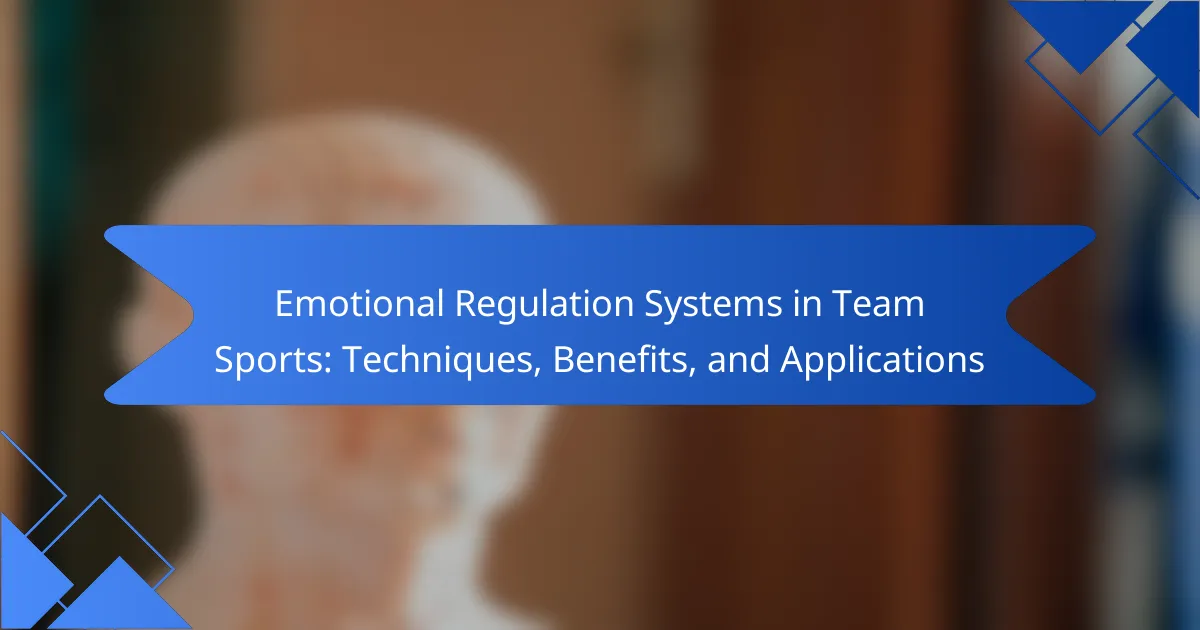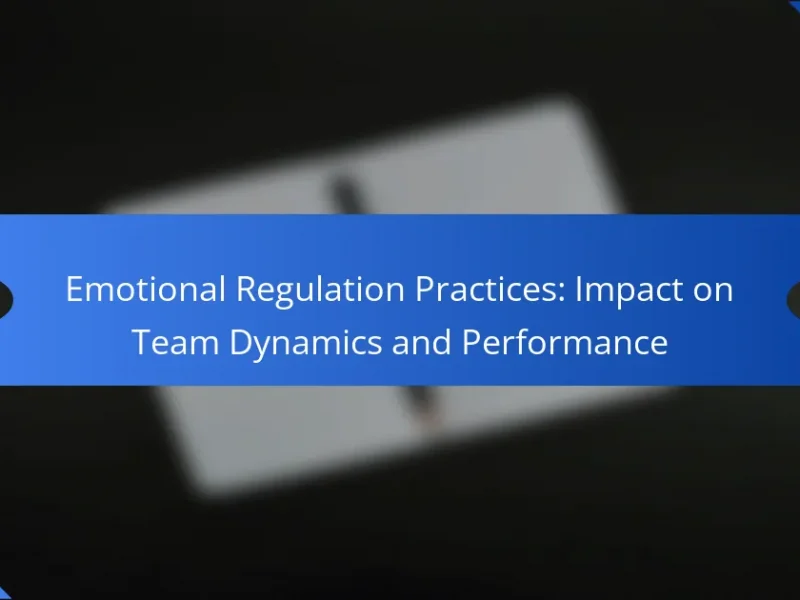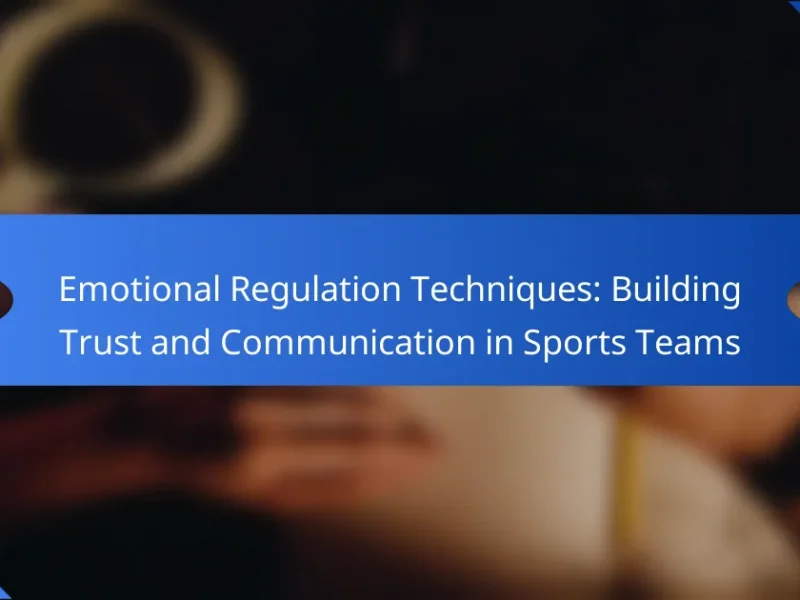Effective emotional regulation systems in team sports enhance performance and team cohesion while reducing stress. Key techniques include mindfulness practices, cognitive restructuring, and emotional awareness training. These strategies foster better communication and resilience among athletes. Teams can measure success through feedback mechanisms and structured practices that promote a supportive environment.
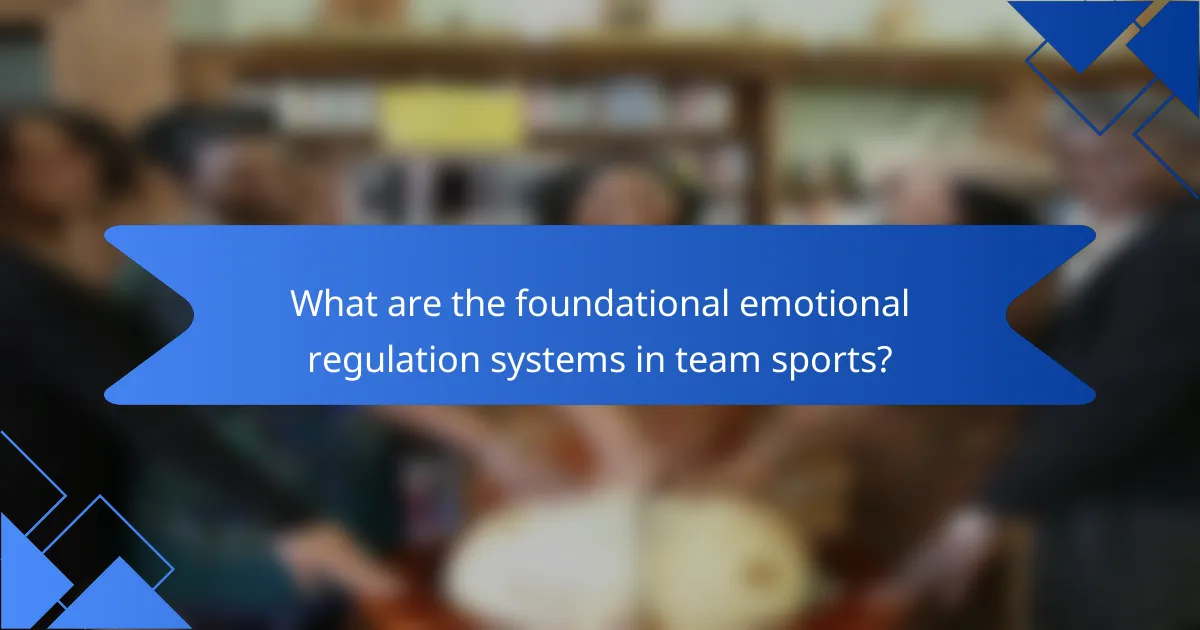
What are the foundational emotional regulation systems in team sports?
Emotional regulation systems in team sports include cognitive appraisal, emotional awareness, and social support. These systems help athletes manage emotions, enhance performance, and foster teamwork. Cognitive appraisal allows players to interpret situations positively, reducing anxiety. Emotional awareness enables recognition of feelings, promoting better responses. Social support provides a network for sharing experiences, enhancing resilience. Together, these systems create a cohesive environment that supports emotional stability and performance improvement.
How do emotional regulation systems impact team dynamics?
Emotional regulation systems significantly enhance team dynamics by fostering communication and collaboration. These systems enable athletes to manage stress and emotions, leading to improved performance and cohesion. Techniques like mindfulness and cognitive restructuring help players maintain focus and support one another during challenging moments. As a result, teams with strong emotional regulation exhibit higher levels of trust and resilience, positively impacting overall success in competitive environments.
What role does emotional intelligence play in team sports?
Emotional intelligence significantly enhances team dynamics in sports by fostering communication and collaboration. It helps athletes manage stress, resolve conflicts, and build trust, ultimately improving team performance. Techniques such as mindfulness and active listening cultivate emotional awareness, allowing players to respond effectively to challenges. As a result, teams with high emotional intelligence often demonstrate stronger cohesion and resilience during competitions.
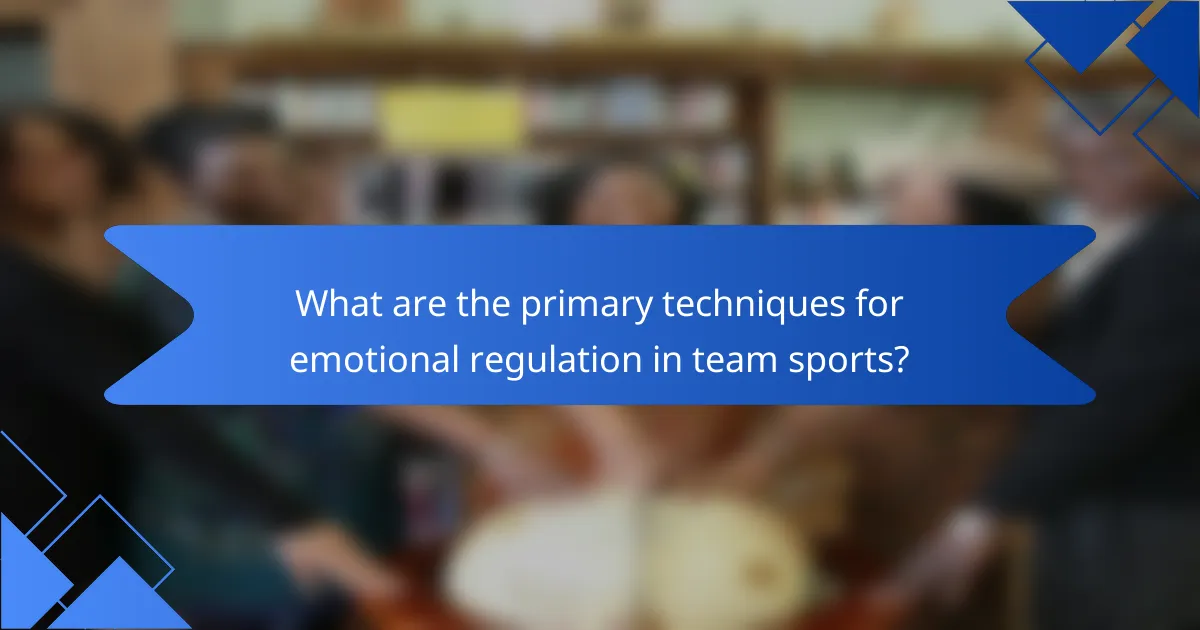
What are the primary techniques for emotional regulation in team sports?
Emotional regulation in team sports involves techniques that help athletes manage their emotions effectively. Key techniques include mindfulness practices, cognitive restructuring, and emotional awareness training.
Mindfulness practices focus on present-moment awareness, helping athletes reduce anxiety and enhance concentration. Cognitive restructuring involves changing negative thought patterns to promote a positive mindset, which can improve performance under pressure. Emotional awareness training enhances athletes’ ability to recognize and understand their emotions, fostering better communication and teamwork.
These techniques lead to benefits such as improved performance, enhanced team cohesion, and reduced stress levels. Implementing these strategies can significantly impact athletes’ emotional resilience and overall success in team sports.
How can coaches implement emotional regulation strategies?
Coaches can implement emotional regulation strategies by integrating mindfulness techniques, fostering open communication, and modeling emotional awareness. These approaches enhance team cohesion and improve performance under pressure.
Mindfulness techniques include breathing exercises and visualization, which help athletes manage stress. Open communication encourages players to express emotions and seek support. Modeling emotional awareness allows coaches to demonstrate healthy emotional responses, setting a positive example for athletes.
As a result, these strategies promote resilience and adaptability, crucial attributes in high-stakes sports environments.
What specific techniques enhance emotional awareness?
Techniques that enhance emotional awareness include mindfulness practices, cognitive restructuring, and active listening. Mindfulness helps athletes stay present, improving their emotional responses. Cognitive restructuring enables them to reframe negative thoughts, fostering a positive mindset. Active listening promotes empathy and understanding within the team, enhancing emotional connections. These techniques collectively support emotional regulation, crucial for performance in team sports.
How can teams practice emotional regulation during training?
Teams can practice emotional regulation during training by implementing specific techniques that enhance awareness and control of emotions. Techniques include mindfulness exercises, role-playing scenarios, and structured feedback sessions. These practices help athletes recognize emotional triggers and develop coping strategies. As a result, teams improve communication, cohesion, and performance under pressure.
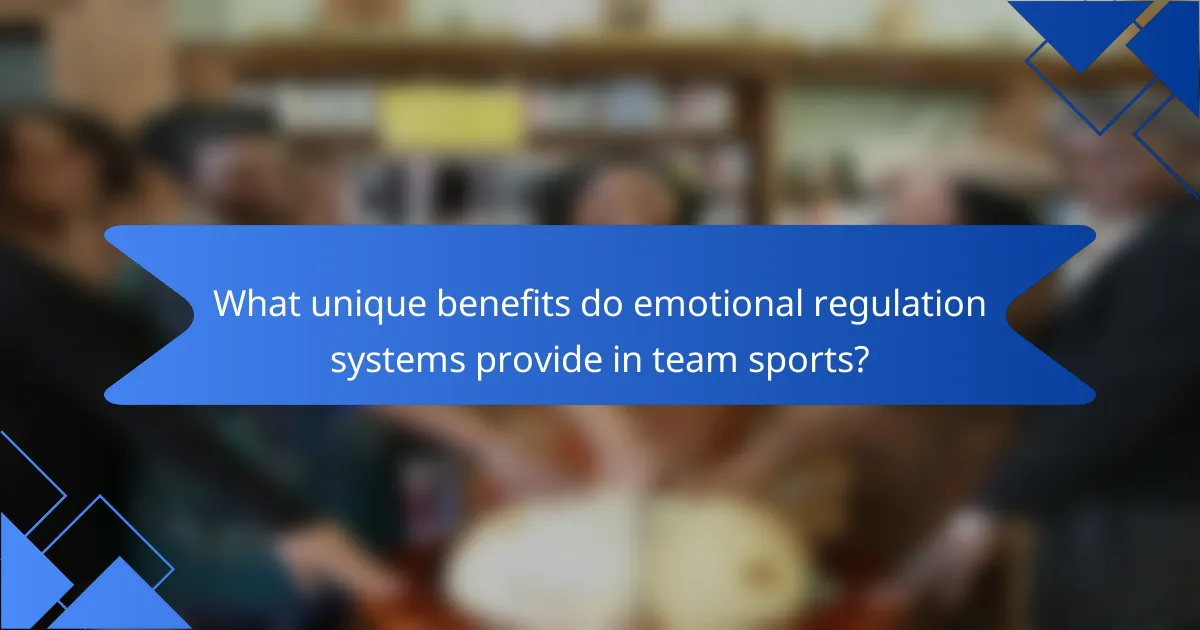
What unique benefits do emotional regulation systems provide in team sports?
Emotional regulation systems in team sports enhance performance, cohesion, and mental resilience. They provide athletes with tools to manage stress, improve communication, and foster a positive team environment. Effective emotional regulation leads to better decision-making during high-pressure situations, ultimately increasing the likelihood of success in competitions. These systems also promote individual well-being, reducing burnout and enhancing overall satisfaction within the team dynamic.
How does emotional regulation influence performance outcomes?
Emotional regulation significantly enhances performance outcomes in team sports by fostering focus and resilience. Effective emotional regulation techniques, such as mindfulness and cognitive restructuring, enable athletes to manage stress and maintain optimal arousal levels. This leads to improved decision-making and teamwork, ultimately enhancing overall performance. Studies indicate that teams with strong emotional regulation skills exhibit higher cohesion and better conflict resolution, which are critical for success in competitive settings.
What are the long-term benefits of emotional regulation for athletes?
Emotional regulation enhances athletes’ performance, resilience, and mental well-being over the long term. By mastering emotional responses, athletes can maintain focus under pressure, reduce anxiety, and improve teamwork. Research indicates that effective emotional regulation leads to better decision-making and increased motivation, fostering a positive competitive environment. Additionally, athletes who practice emotional regulation report higher satisfaction and lower burnout rates, contributing to sustained career longevity.
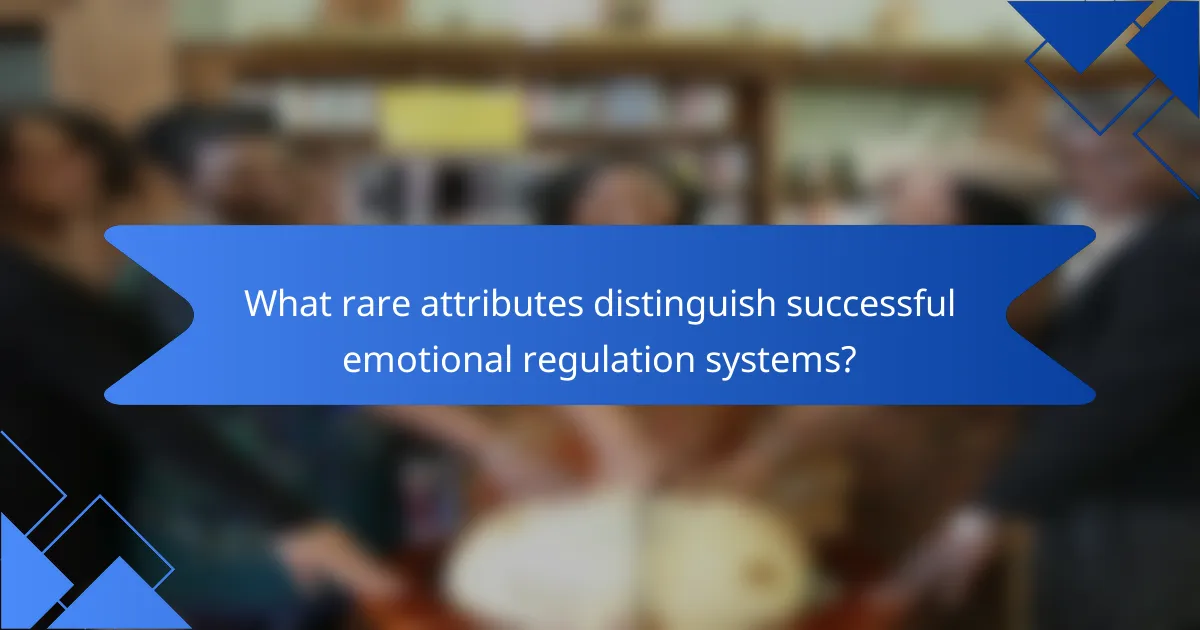
What rare attributes distinguish successful emotional regulation systems?
Successful emotional regulation systems in team sports are distinguished by their adaptability, real-time feedback mechanisms, and integration of mindfulness practices. These rare attributes enhance team cohesion and performance under pressure. Adaptability allows systems to adjust strategies based on player emotions, while real-time feedback ensures immediate responses to emotional states. Integration of mindfulness fosters self-awareness and emotional clarity among team members, promoting a supportive environment.
How do cultural factors affect emotional regulation in sports teams?
Cultural factors significantly influence emotional regulation in sports teams by shaping communication styles, conflict resolution methods, and team cohesion. For example, teams from collectivist cultures may prioritize harmony and group dynamics, leading to more collaborative emotional management. In contrast, individualistic cultures might encourage personal expression of emotions, impacting overall team dynamics. Understanding these cultural dimensions helps coaches develop tailored emotional regulation strategies that enhance performance and team unity.
What unique challenges do different sports face in emotional regulation?
Different sports face unique challenges in emotional regulation due to their distinct environments and demands. Team sports often involve high social interactions, leading to pressure from teammates and fans. Individual sports may create isolation, increasing anxiety and self-doubt.
In contact sports, the physical nature can heighten aggression, complicating emotional control. Conversely, non-contact sports may emphasize perfectionism, causing stress and fear of failure. Each sport’s culture influences emotional responses, requiring tailored regulation techniques.
For example, basketball players may use visualization to manage in-game pressure, while swimmers might focus on breathing techniques to maintain composure. Understanding these unique challenges is essential for developing effective emotional regulation systems in sports.
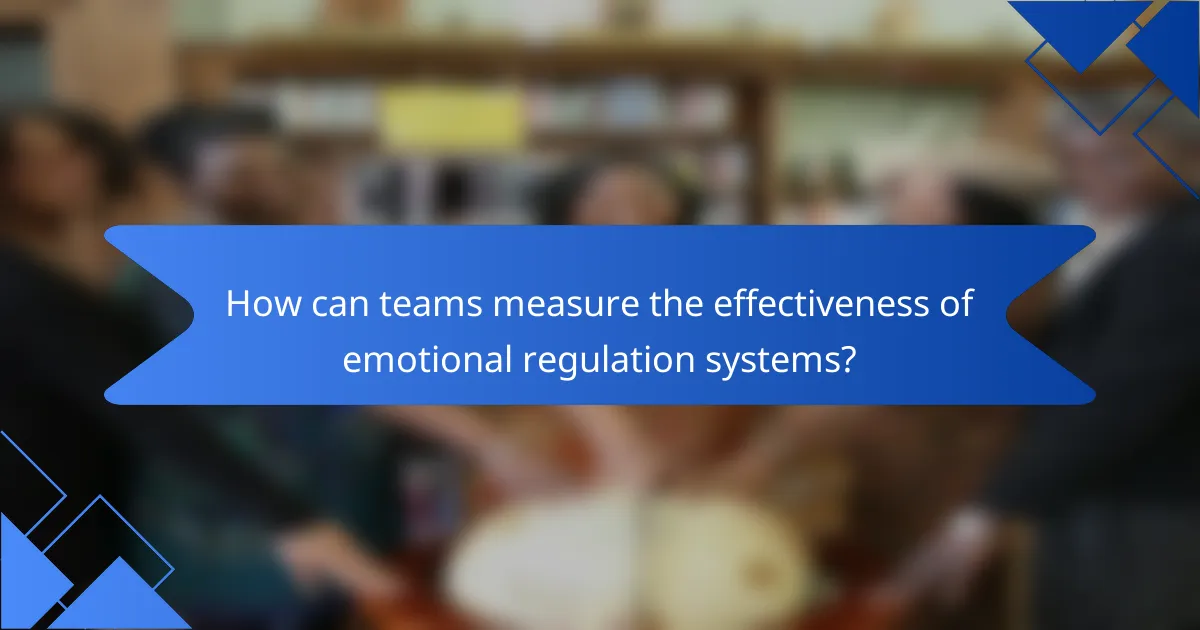
How can teams measure the effectiveness of emotional regulation systems?
Teams can measure the effectiveness of emotional regulation systems through various metrics and feedback mechanisms. Key methods include assessing team cohesion, monitoring emotional responses during practices and games, and analyzing performance outcomes. Regular surveys can capture players’ perceptions of emotional climate and regulation strategies. Additionally, video analysis can provide insights into emotional expressions and interactions during critical moments. Tracking these attributes allows teams to refine their emotional regulation systems effectively.
What metrics are used to assess emotional regulation in athletes?
Emotional regulation in athletes is assessed using various metrics, including self-report questionnaires, physiological measures, and behavioral observations. Common tools include the Emotion Regulation Questionnaire, heart rate variability, and video analysis of on-field behavior. These metrics provide insights into athletes’ emotional responses and coping strategies during competition.
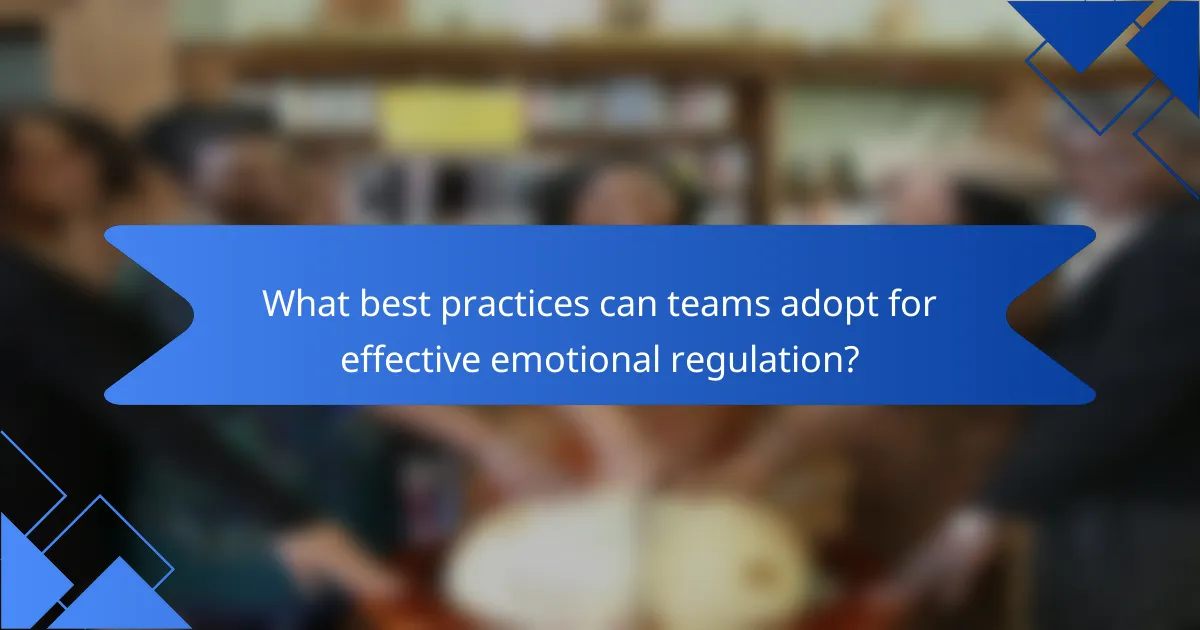
What best practices can teams adopt for effective emotional regulation?
Teams can adopt practices such as open communication, mindfulness techniques, and structured feedback sessions for effective emotional regulation. These strategies enhance team cohesion and performance.
1. Open Communication: Encourage team members to express emotions and concerns freely, fostering a supportive environment.
2. Mindfulness Techniques: Implement practices like meditation or breathing exercises to help players manage stress and stay focused.
3. Structured Feedback Sessions: Regularly scheduled meetings provide a platform for discussing emotional challenges and celebrating successes, reinforcing positive emotional states.
4. Conflict Resolution Training: Equip team members with skills to address conflicts constructively, promoting emotional resilience.
5. Emotional Check-Ins: Brief daily or weekly check-ins allow team members to share their emotional states, facilitating early intervention if needed.
6. Team-Building Activities: Engage in activities that strengthen relationships, helping to build trust and emotional safety within the team.
What common mistakes should teams avoid in emotional regulation?
Teams should avoid common mistakes in emotional regulation, such as ignoring emotional cues, failing to communicate effectively, and neglecting team dynamics. Recognizing individual emotions and fostering open dialogue enhances team cohesion. Additionally, overlooking the importance of training in emotional regulation techniques can hinder performance. Finally, not addressing conflicts promptly can lead to unresolved tensions, impacting overall team morale.
How can teams continuously improve their emotional regulation strategies?
Teams can continuously improve their emotional regulation strategies by implementing regular feedback sessions and training programs. These practices foster open communication, enabling team members to express emotions constructively. Additionally, mindfulness exercises enhance self-awareness, allowing athletes to identify emotional triggers. Creating a supportive environment encourages sharing experiences, which can lead to collective emotional growth. Incorporating these techniques not only boosts individual performance but also strengthens team cohesion and resilience.
